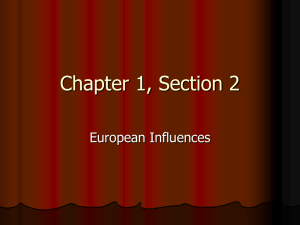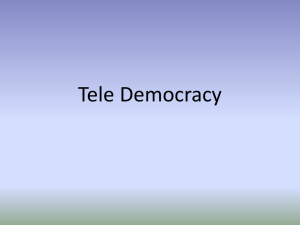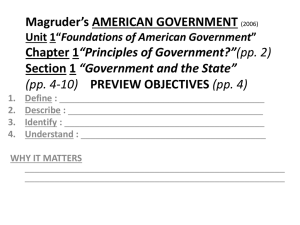Regulative State, Governance, Neo
advertisement
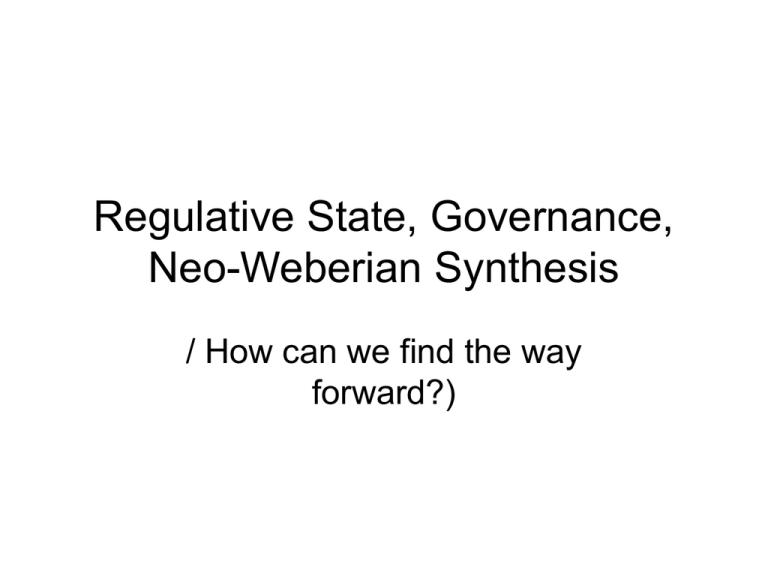
Regulative State, Governance, Neo-Weberian Synthesis / How can we find the way forward?) • In my opening speech I am asking three main questions: – What are the fundamental, long-term changes in the environment? – What challenges have been emerged for the governments? – What are the core requirements of the governmental responses? Do we need to think about new models for public administration? • Many economic, political, and social issues have become transnational rather than national or regional or local. • The social character of the EU countries has immensely changed, with greater diversity in the population, increasing income disparity, changes in family structure and lifestyles, and growing public safety concerns. We have been struggling to create new means of social cohesion and new patterns of value orientation. What are the challenges for governance in the EU, coming from the changing environment? • EU governments have to adjust and accommodate to these changes. • The key issue is how governments, public agencies can be stable in a rapidly, sometimes unpredictably changing environment. How you can respond to change and maintaining your stability at the same time. The irony is, that when you are static, you can not maintain stability. Dynamic stability is the only solution. Regarding public participation • Citizens need to be treated as full participants in many more case, not just as customers. Otherwise we should cope with – even stronger and stronger – populist backlashes. • Governments should communicate well with citizens. Otherwise they cannot sustain legitimacy and build support for their decisions and actions. • We have to make a shift from ideological and party driven actions to interest group politics with participative character. Public agencies have to give more thought to collaboration, and what it means in a multi-cultural society. Regarding institutional changes • we should increase the institutional capacities of our public agencies with • transforming, flattening large bureaucracies • increasingly substituting ad hoc and temporary for permanent forms, implementing changes effecting hierarchy • strengthening the capacities to lead, and manage on all levels of governance • creating much closer ties between public sector, private sector and civil society organizations. • last but not least managing a shift from task execution to complicated problem-solving. Of course we need improvements in the management machinery at the same time. • The third question sounds as follows: • What are the implications of these challenges to the public sector? • The initial step have been public management reforms. But they were not enough. Then public policy making reforms and legal innovations were added. And it resulted in combined public modernization processes. The various types of public management reforms have common requirements. • First of all they consist of 3 different contracts. They are as follows: • establishment of contractual based relationships between the regulative and service provider functions of the governments • improvement of quality of public services • legitimizing public services by Citizens’ Charter either they are market type oriented like in Great Britain or “Rechtsstaat” (Rule of Law) oriented like in France. Secondly the different types following a three-stage historical pattern. • The three stages are as follows: • the traditional Weberian model with the dominance of hierarchical mechanisms • uncoupling the different functions of policy making, involvement of various actors in the public service provision ( private enterprises and civil society organizations), increasing the role of market mechanisms • adding horizontal integration to the hierarchical and market integration, struggling with the danger of fragmentation. • Apart from managerial requirements we should cope with other modernization requirements as well. I would emphasize only two of them – shift from government to governance, and the increasing importance of the regulativemonitoring power of EU governments – the emergence of participative democracy • Governance is the process by which different actors collectively solve their problems and meet society’s needs. • On the other hand government is the main instrument we use. • Governments are catalytic, they separate "steering" (policy and regulatory) functions from "rowing" (service-delivery and compliance functions). • -Governments are community-owned. They empower rather than serve • -Governments are competitive. They inject competition into service delivery • Competitive governments require service deliverers to compete for their business, based on their performance and price. • -Governments are mission-driven. They transform rule-driven organizations to mission-driven governments deregulating internally, eliminating many of their internal rules and radically simplifying their administrative systems, such as budget, personnel, and procurement. • Governments are results-oriented. They fund outcomes, not inputs • in a governance approach the criteria of the strength of the government are as follows: – Can governments actively shape their communities, states, and nations? – Can they put more social and economic institutions into motion? – Can they make more policy decisions or are they get caught on the tax-and-spend treadmill? • The second requirement is the emergence of participative democracy. • In the mainstream developments of democratic political system there were three main stages: – direct democracy – representative democracy – post-parliamentary, so-called participative democracy • Governance needs a participative democracy as political framework. When we stick at representative democracy and hesitate in pursuing participative democracy then our nightmares come true instead of our dreams. • Politicians divide society into a polar spectrum containing marketplace on the one side and government on the other side. In this approach civil society is dependent from these two centres. But we need an approach in which market economy, government and civil society are parts of a three-legged chair. The first leg creates market capital, the second one creates public capital and the third one creates social capital. Civil society has to develop to a third, independent force in public policy making and then the perspective is a Neo-Weberian synthesis and not a combined mistake of a neopatrimonial state. • The consequence of politicization is the dangerous impact of ideology in public policy making. • Creating a homogeneous ideological background – it could mean socialist, neoliberal or conservative dominance – causes weaknesses in the effectiveness of policy decisions. • Political ideology is the hole in the cheese. However the hole is integral part of the cheese, but definitely does not belong to the substance. • In an optimal case political ideology should be a shopping basket. We can select them in problem oriented approach depending on the nature and character of the problem to be analyzed and solved. • A functioning Rechsstaat is a necessity in the course of modernization but you have to add to this development the application and implementation of the quality models of public services as well. You need a balanced position and public administration needs a stable political background and strong consensus of the political parties in supporting this process. • We can call it a Neo-Weberian Synthesis, in which governmental actions are based on the Rule of Law, in which private enterprises are involved for competing quality in the service delivery, and in which civil society organizations have a full range involvement in public policy making, from decision making to service provision. • Thank you so much for your attention.
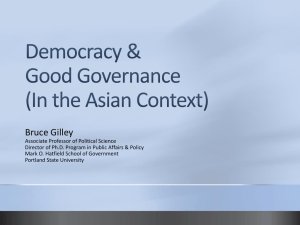
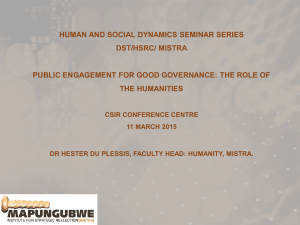

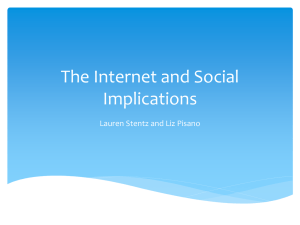
![“The Progress of invention is really a threat [to monarchy]. Whenever](http://s2.studylib.net/store/data/005328855_1-dcf2226918c1b7efad661cb19485529d-300x300.png)

